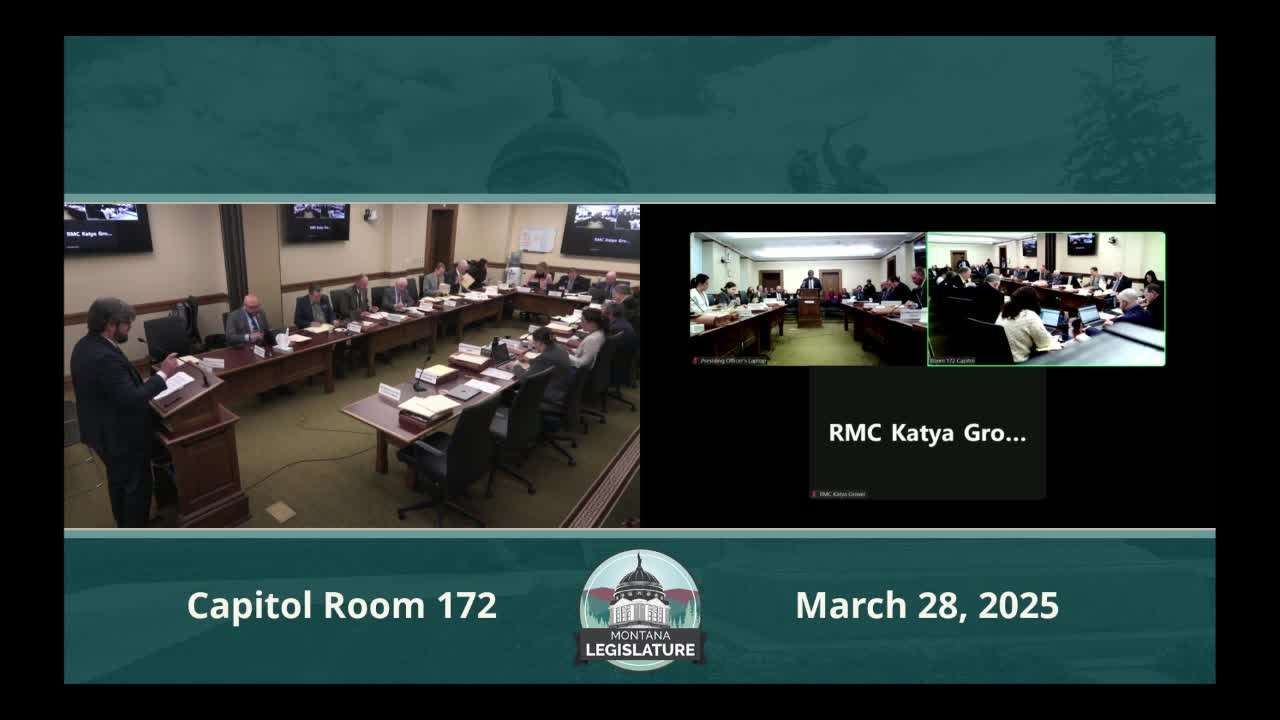Montana lawmakers propose study to enhance access to federal grant opportunities
March 28, 2025 | 2025 Legislature MT, Montana
This article was created by AI summarizing key points discussed. AI makes mistakes, so for full details and context, please refer to the video of the full meeting. Please report any errors so we can fix them. Report an error »

A new resolution, HJ 28, is set to pave the way for improved access to federal grant opportunities across Montana, targeting state, tribal, and local governments, as well as school districts. The proposal, discussed during a recent House Business and Labor Committee meeting, aims to identify barriers that prevent smaller communities from securing vital federal funding.
The resolution highlights the potential of federal grants to drive economic development and infrastructure investment, especially in light of the current federal funding landscape, which is marked by uncertainty. Proponents argue that despite the federal government's shifting stance on funding, these grants remain a crucial resource for Montana's communities, particularly those facing significant infrastructure challenges.
Representative Miskiewicz, who introduced the resolution, emphasized the importance of the right grants for the right projects, citing successful examples such as a $47.5 million economic development grant awarded to improve infrastructure in Rosebud, Custer, and Fallon Counties. He noted that Montana receives more federal resources per capita than many densely populated states, yet smaller rural communities often struggle to access these opportunities.
Supporters of HJ 28, including representatives from the Montana Quality Education Coalition and the Montana Chamber of Commerce, echoed the need for a comprehensive study to address disparities in grant access. They stressed that many local governments lack the personnel and resources to navigate the complex grant application process, which can hinder their ability to secure necessary funding.
The resolution aims to create an interim study committee that will investigate these disparities and recommend strategies to enhance grant acquisition for all Montana communities. As the discussion continues, advocates are hopeful that this initiative will lead to a more equitable distribution of federal resources, ultimately benefiting the state's diverse populations and addressing critical infrastructure needs.
The resolution highlights the potential of federal grants to drive economic development and infrastructure investment, especially in light of the current federal funding landscape, which is marked by uncertainty. Proponents argue that despite the federal government's shifting stance on funding, these grants remain a crucial resource for Montana's communities, particularly those facing significant infrastructure challenges.
Representative Miskiewicz, who introduced the resolution, emphasized the importance of the right grants for the right projects, citing successful examples such as a $47.5 million economic development grant awarded to improve infrastructure in Rosebud, Custer, and Fallon Counties. He noted that Montana receives more federal resources per capita than many densely populated states, yet smaller rural communities often struggle to access these opportunities.
Supporters of HJ 28, including representatives from the Montana Quality Education Coalition and the Montana Chamber of Commerce, echoed the need for a comprehensive study to address disparities in grant access. They stressed that many local governments lack the personnel and resources to navigate the complex grant application process, which can hinder their ability to secure necessary funding.
The resolution aims to create an interim study committee that will investigate these disparities and recommend strategies to enhance grant acquisition for all Montana communities. As the discussion continues, advocates are hopeful that this initiative will lead to a more equitable distribution of federal resources, ultimately benefiting the state's diverse populations and addressing critical infrastructure needs.
View full meeting
This article is based on a recent meeting—watch the full video and explore the complete transcript for deeper insights into the discussion.
View full meeting
